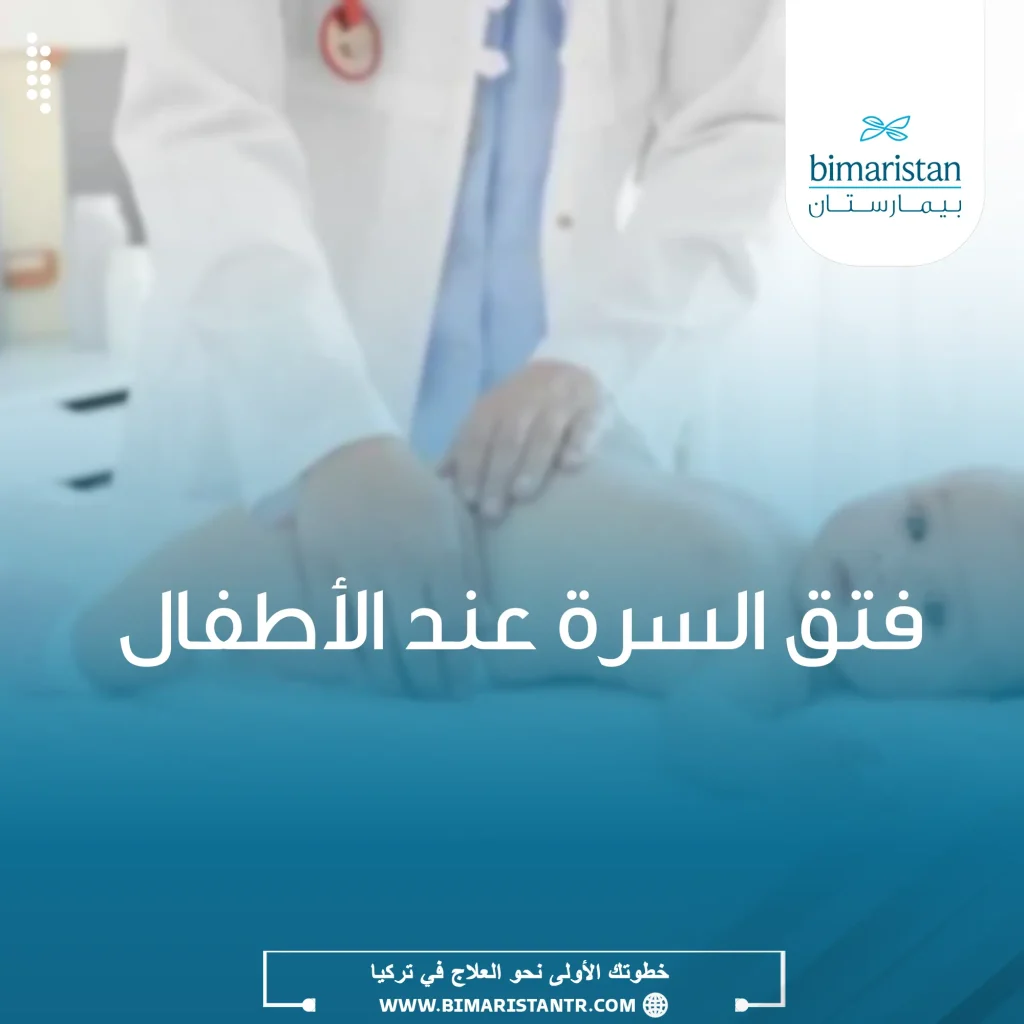فتق السرة عند الأطفال (الفتق السري) هو انتفاخ سرة الطفل بسبب عدم انغلاق منطقة الحبل السري في الرضع بعد الولادة فيحدث خروج الأمعاء من البطن والإصابة بالفتق.
يعد فتق السرة عند الأطفال Umbilical Hernia حالة شائعة (من أَكثر الفتوق شيوعًا عند الأطفال) تصيب 20% من الرضع تحت عمر 6 أشهر فنلاحظ انتفاخ السرة لدى الطفل عند البكاء، الأمر الذي يقلق الأهل ويدفعهم لأخذ طفلهم إلى الطبيب مباشرة.
إن فتق السرة عند الأطفال حالة سليمة في غالب الحالات وتزول خلال بضع سنوات، لكن في بعض الأحيان قد تحدث اختلاطات خطيرة تتطلب العلاج الجراحي الفوري. تابعي معنا كي تعرفي متى يكون الفتق السري لدى طفلك حالة سليمة تشفى مع الوقت ومتى يجب علاج فتق السرة عند الأطفال بأسرع وقت ممكن.
ما هو فتق السرة عند الأطفال؟
الفتق السري عند الأطفال هو حدوث انتباج سرة الرضيع عند البكاء أو التبرز دون أن يسبب ذلك أي ألم أو أَعراض لدى الطفل. تشفى معظم حالات فتق سرةِ الرضيع عند بلوغه عمر 4 أو 5 سنوات.
في حال لم يشفى الفتق السري أو ظهرت أعراضٌ جديدة يتوجب على الأهل الإسراع إلى طبيب الأطفال لتقييم الرضيع وتقرير المعالجة المناسبة له.
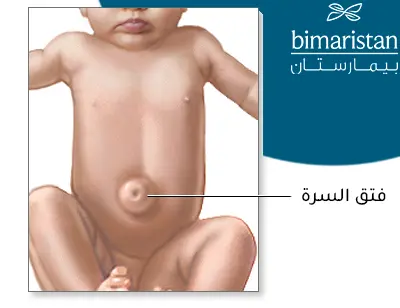
أسباب فتق السرة عند الرضع
تتم تغذية الجنين في رحم أمه عبر الحبل السري الذي ينقل له الأكسجين والمغذيات ويسحب الفضلات من جسمه ويؤمن طريقاً لطرحها، يدخل هذا الحبل بطن الجنين عبر فتحة في عضلات جدار البطن (الحلقة السرية)، تغلق هذه الفتحة بعد الولادة عند معظم المواليد، لكن في بعض الأحيان لا تغلق عند الأطفال بشكل كامل فيحدث الفتق السري.
ينفتق النسيج الدهني عبر فتحة السرة في جدار البطن وقد يخرج جزء من الأمعاء أيضاً مما يسبب الانتباج في سرة الرضيع مكان الفتق خاصة عند زيادة الضغط ضمن البطن (البُكاء، التغوط، الوقوف، السعال والإجهاد).
أشيع ما تشاهد هذه الحالة عند الأطفال الخدج (الطفل المولود قبل موعد نهاية الحمل هو الأكثر عرضة للإصابة) حيث لا تغلق الحلقة السرية بشكل كامل ويحدث فتق السرة عند الأطفال. يعد ذلك من أهم أسباب فتق السرة عند حديثي الولادة وحدوث انتفاخ (بروز السرة) لديهم.
أعراض فتق السرة عند الأطفال
يلاحظ فتق السرة عند الأطفال Umbilical Hernia كما أسلفنا بأنه على شكل انتباج كيسي مكان الفتق السري يظهر عند البكاءِ أو زيادة الضغط ضمن البطن (شكل فتق السرة عند حديثي الولادة هو انتفاخ سرة الرضيع عند البكَاء) ويختفي في حال استلقاء واسترخاء الطفل وهي علامة كلاسيكية للفتق وهو غير مؤلم في غالب الحالات. (قد يحدث فتق السرة عند النساء والرجال البالغين بشكل أقل شيوعاً من الأطفال حيث يسبب الألم وبعض الأعراض الهضمية أحياناً لديهم).
أعراض اختناق الفتق السري
في حال ظهور أعراضٍ مختلفة في الفتق السري مثل الألم أو الإقياء وتغير لون الانتباج عند السرة فيجب الإسراع بالطفل إلى الطبيب المختص فوراً خشية حدوث مضاعفات خطيرة بِسبب انحصار عروة معوية في عنق الفتق السري في البطن وانقطاع التروية الدموية عنها.
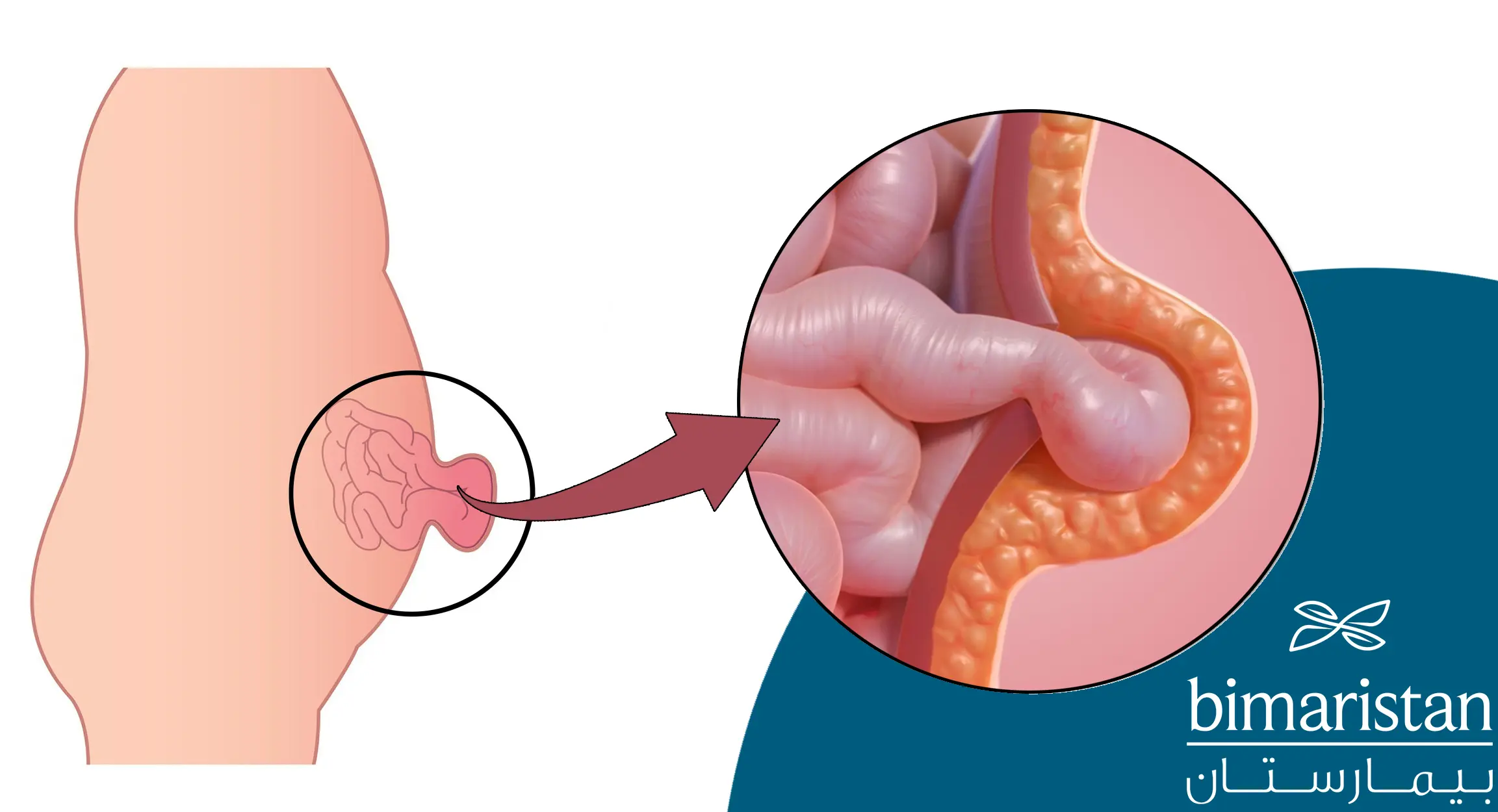
تشخيص الفتق السري عند الأطفال
يتم تشخيص فتق سري عند الطفل بالفحص السريري حيث يلاحظ الدكتور الانتباج الكيسي في السرة عند بكاء الرضيع واختفاء هذا الانتباج عند راحته.
يحاول الطبيب رد هذا الفتق بلطف، في حال تمكن من رده فالفتق ردود وغير مختنق (الأمعاء ليست محاصرة في عنق الفتق)، والحالة هنا سليمة قد تشفى مع مرور الوقت دون الحاجة لتداخل جراحي.
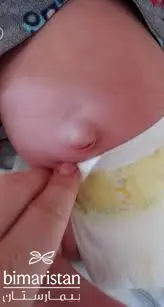
في حال لم يتمكن الطبيب من رد الفتق السرّي لدى الطفل ووجد مقاومة أثناءَ ذلك فالفتق السري لدى الطفل هو فتق مختنق حيث علقت عروة معوية في عنق الفتق.
وهذه حالةٌ خطيرة حيث قد تنقطع التروية الدموية عن الأمعاء ويتغير لون فتق السُرّة مما يؤدي لحدوث إقياءات لدى الطفل وتكون حالته العامة غير جيدة والتداخل الجراحي الفوري مطلوب هنا لمنع حدوث اختلاطات خطيرة قد تكون مهددة للحياة.
علاج فتق السرة عند الأطفال
يختلف علاج الفتق السري من مريض لآخر، حيث قد نحتاج التداخل الجراحي في بعض الحالات، يفيد في حالات أخرى المراقبة والانتظار فقد يشفى الفتق السري بِدون جراحة.
في حال اللجوء للحل الجراحي فقد تجرى العملية باستخدام الجراحة المفتوحة أو باستخدام المنظار، يعود ذلك لمهارة الجراح وتوافر المعدات والتجهيزات اللازمة في المشفى.
علاج فتق السرة بدون جراحة
يوصى بالانتظار والمراقبة عند الأطفال مع فتق سري حيث يفضل علاج فتق السرة من غير اللجوء للجراحة عند الرضع والأطفال صغار السن حتى عمر 4 أو 5 سنوات وذلك لاحتمالية شفاء الفتق من تلقاء نفسه وعدم الحاجة لتداخل جراحي.
متى نعالج فتق السرة عند الأطفال بالجراحة
علاج الفتق السري عند الأطفال بالجراحة يتم في الحالات الحرجة التي لا يمكن فيها ترك الطفل من غير علاج وإلا لحدثت اختلاطات شديدة مهددة لحياته، ومن أهم استطبابات عمل جِراحة لفتق السرة عند الأطفال ما يلي:
- بقاء الفتق السري عند الطفل حتى عمر 4 أو 5 سنوات
- اختناق الفتق السري (أي انحصار الأمعاءِ في منطقة عنق فتق السرة في البطن وعدم قدرتها على العودة لمكانها مع تأثر ترويتها الدموية)
- حجم انتفاخ الفتق أكبر من 1.5 سم عند الأطفال فوق سنتين
- الفتق يسبب أعراضاً للطفل (ألم مكان الفتق أو أَعراض هضمية مثل الإقياء)
- تغيير لون الجلد في منطقة الفتق السري (قد يكون مؤشراً لحدوث نقص التروية الدموية في الأَمعاء)
عملية فتق السرة عند الأطفال في تركيا
يعالج فتق السرة بالجراحة في حال حدوث الاختلاطات وتستغرق عملية فتق السرة عادة 20 – 30 دقيقة وتجرى إما بالجراحة المفتوحة أو باستخدام المنظار، يعود ذلك لمهارة الجراح وتطور المشفى الذي تجرى العملية فيه. سيرشدك مركزنا لأفضل المستشفيات وأمهر الجراحين في تركيا.
ما قبل عملية فتق السرة
بما أن العملية سوف تجرى باستخدام التخدير العام فيجب على الطفل أن يكون صائماً عن الطعام والشراب لمدة معينة يحددها الطبيب لتجنب اختلاطاته أَثناء العملية.
أثناء عملية فتق السرة
بدايةَ يخدر الطفل تخديراً عاماً حتى ينام بهدوء. يقوم الجراح بعدها بإعادة الأجزاء العالقة ضمن الفتق إلى مكانها (إما بالمنظار أو بالجراحة المفتوحة)، بعد ذلك يقوي عضلات جدار البطن بوضع خرزات وخيوط قابلة للامتصاص، في بعض الأحيان يوضع مكان الفتق شبكة تدعم جدار البطن أكثر لضمان عدم انتكاس فتق السرة وحدوثه مرة أخرى (عملية فتق السرة بالشبكة)، يقوم الجراح بعدها بإغلاق مكان العملية وبذلك يكتمل علاج فتق السرة عند الأطفال.
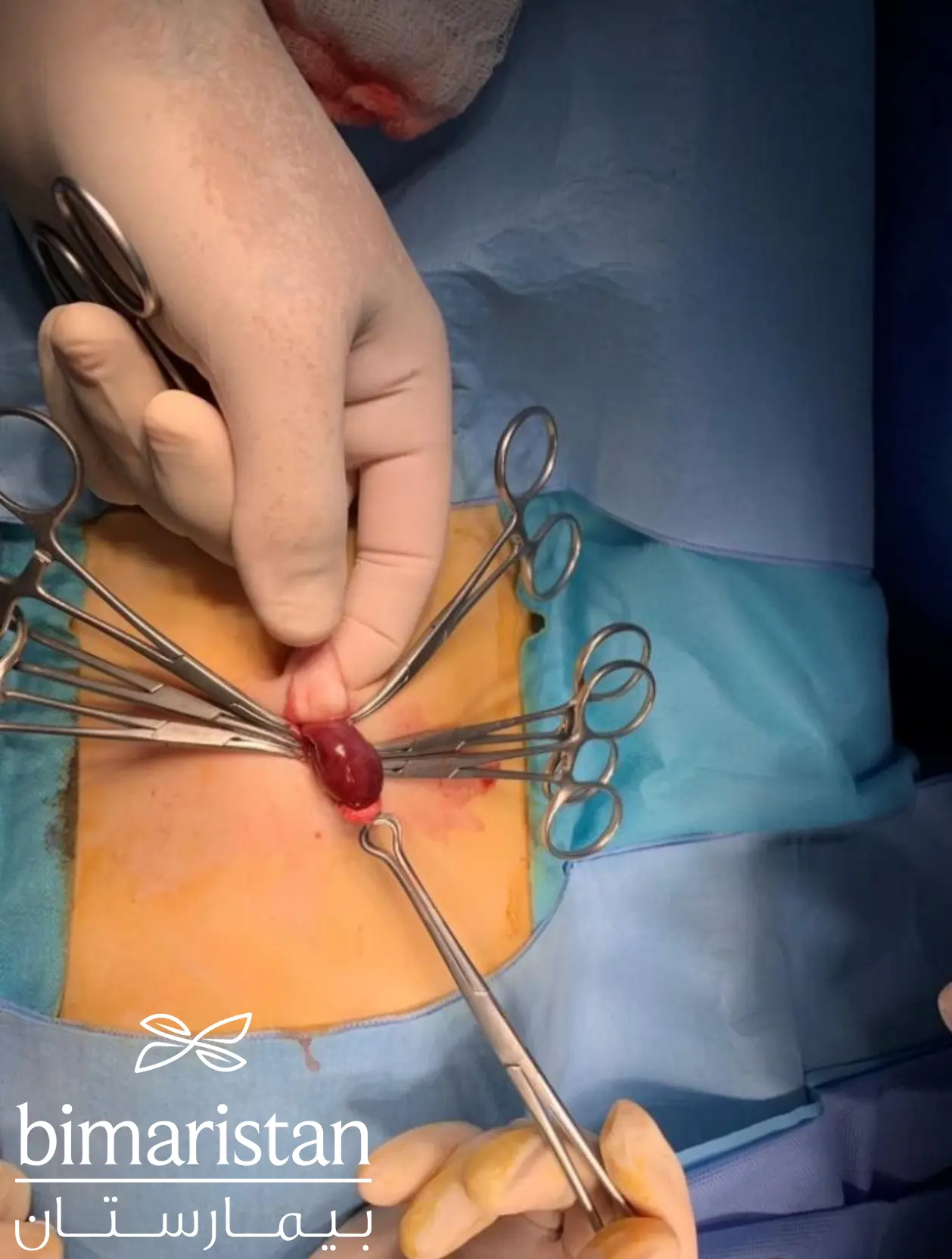
بعد عملية فتق السرة عند الأطفال
بعد زوال أثر المخدر يستطيع الطفل العودة إلى المنزل في نفس يوم العملية، لكن يوصي الطبيب بالتزام الراحة وعدم بذل أي مجهود لعدة أيام كما ويتم تأخير العودة للمدرسة حتى يلتئم مكان الجرح بشكل جيد. قد يشعر الطفل بالقليل من الألم مكان العملية في الأيام الأولى بعدها ويتم تدبيره بمسكنات الألم.
اختلاطات العمل الجراحي
تعد الاختلاطات نادرة جداً كونها من العمليات الآمنة، رغم ذلك قد تحدث أحياناً ومن أهم هذه الاختلاطات:
- إنتان مكان العملية
- الحرارة والإقياء
- نكس العمل الجراحي وعودة حدوث انتفاخ وفتق السرة عند الأطفال
الفتق السري عند الصغار الرضع هو انتفاخ منطقة سُرة الطفل (بروز سرة الرضيع في البطن) وهو حالة شائعة نسبياً عادة ما تشفى لوحدها مع تقدم عمر الطفل، يراقب الفتق حتى عمر خمس سنوات وفي حال لم يشفى لوحده أو في حال أظهر الفتق أعراضاً لدى طفل قبل هذه السن يتوجب حينها علاجه جراحياً لتفادي المخاطر التي قد تنتج عنه.
المصادر:

